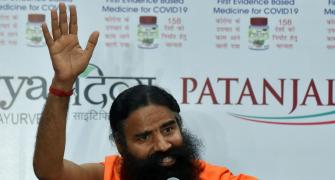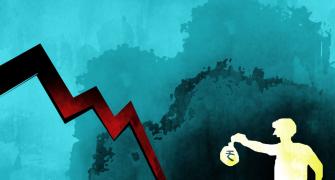During mid-to late-1990s, the downturn in the equity markets and abnormally high interest rates significantly impacted the corporate sector. Indian corporations were dependent either on the equity markets or on bank and institutional lending for funds to implement the large capital expenditure programmes that they had undertaken.
Given the inability to raise equity, the already high debt-equity ratios were further aggravated and project implementation was delayed. The situation was aggravated by high interest rates and a slowdown in the global economy, notably the east-Asian crisis.
However, these were not the only causes for distress. Corporate India was still coming to terms with a liberalised economy and integration with the global marketplace.
In this context, the recent downturn in the equity markets and increase in interest rates, both domestic and international, are unlikely to have any significant adverse impact on the sector. A number of structural changes in the corporate sector have made it more resilient.
During the mid-1990s, many corporations had undertaken greenfield projects. In contrast, these businesses are now more cautious and have executed brownfield capacity expansions where they have a past track-record of project completion, sufficient cash flows and accumulated surpluses from their operations to finance part of the project, rather than depending purely on new equity or debt.
The few greenfield projects being undertaken have lower gearing and are appropriately structured to mitigate risks.
With the increasing interest and positive view of global investors with respect to the Indian economy, the financial flexibility of the corporate sector has increased. There are a number of international private equity investors willing to invest in Indian companies.
For instance, during the six-month period ended June 2006, investment by private equity and venture capital funds was $3.4 billion as against $2.2 billion in 2005. These investors take a long-term view based on the fundamentals of the companies. Hence, the corporate sector has the option of diverse sources of capital like private equity and foreign currency convertible bonds.
In addition, structural changes in the corporate sector have resulted in enhanced productivity and financial flexibility. There has been an increase in the level of internal accruals and reduction in the financial leverage.
An analysis of a sample of about 1,650 companies revealed that during March 1994 to 2005, the inventory levels reduced from 2.5 months to 1.6 months, debt equity ratio decreased from 1.44 times to 0.99 times, and fixed asset turnover ratio improved from 2.1 times to 3.1 times.
Thus, operational and financial efficiency within the corporate sector and diversification of the sources of capital has given it resilience in the face of short-term volatility in the equity markets and increase in interest rates.
Ajit Ranade, Chief Economist, Aditya Birla Group
In its current phase, the Indian economy has four distinct growth drivers. These are exports, investments, demographics and rising per capita incomes.
Let's examine each one separately - after all when confronted with a clutter of data, it is best to take the advice of Albus Dumbledore, the headmaster of Hogwarts School. He recommends the use of the Pensieve, into which you unload all the clutter of your mind and examine each thought, or memory, or macroeconomic data, one at a time.
Consider exports. In the past three years, our exports have grown at 21.4 per cent, 24.1 per cent and 24.7 per cent, respectively. This year the trade deficit is the widest, and yet the previous quarter showed a current account surplus. Which means services exports and capital inflows remain strong. Those inflows are a vote of confidence in the underlying economy.
Next comes investments. Since the capex pipeline is usually 18 to 24 months long, the current rise in rates will not affect the ongoing expansion plans. Most industries are experiencing high capacity utilisation, making expansion in capacity mandatory. These decisions are unrelated to rising interest rates. Then there's demographics. In the next decade or two, the labour force will expand faster than the population. More youngsters becoming income earners means positive implications for demand for goods as well as tax collections. This factor, too, is insulated from interest rates.
Lastly, the phenomenon of rising per capita incomes. This is both a consequence and driver of GDP growth. However, as per capita incomes approach $1,000, we see an upward inflection in economic activity. Which translates into demand for durables, autos, lifestyle products, healthcare and so on.
Thus, the basic growth dynamics is not threatened by rising rates. After all, rates have risen by about 100 basis points since the beginning of the year and are not likely to rise much more. These higher rates will surely dent demand for retail loans and, hence, all EMI-related purchases, from housing to autos to other consumer durables.
But overall non-food credit keeps rising at a healthy 30 per cent per annum. The mix will be more toward corporate rather than retail credit. The spectre of inflation is haunting the whole world, primarily caused by oil. But contrary to IMF's earlier dire prediction, the past three years have seen exceptionally strong global growth despite the oil price increase. This has positive implications for India's export prospects.
As with the asset markets, an overdose of high returns cannot but be ephemeral. But instead of a binge of 40 per cent growth in top and bottom lines, as seen a couple of years ago, we will see corporations showing a healthier and sustainable rise of maybe 20 per cent growth. As for impact of rising rates, it's worth taking a memory out of Dumbledore's Pensieve - back in the mid-1990s, during our previous investment boom, the prevailing rates were around 17 per cent, double those of today!







